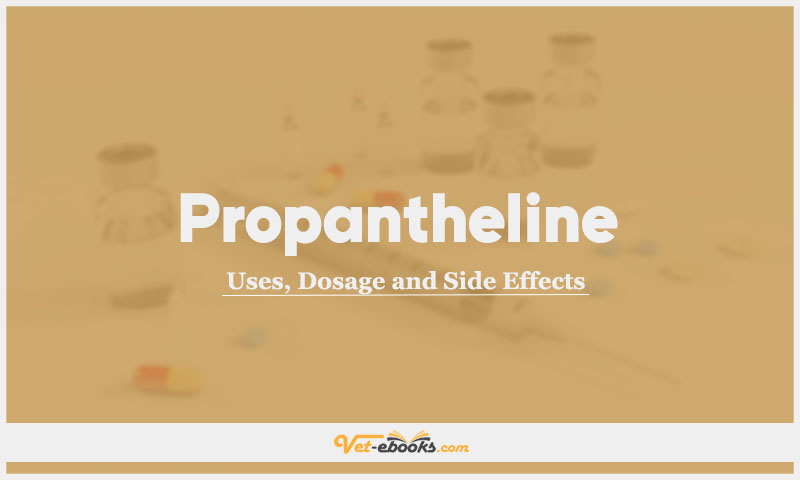Propantheline In Dogs & Cats: Uses, Dosage and Side Effects

Overview
- Quarternary antimuscarinic agent.
Uses of Propantheline
- Treatment of anticholinergic-responsive bradycardia.
- Management of incontinence caused by detrusor hyperreflexia.
- Peripherally acting antiemetic.
- Adjunctive therapy to treat GI disorders associated with smooth muscle spasm.
Dose of Propantheline in Dogs and Cats
Dogs:
- Bradycardia: 0.25–0.5 mg/kg p.o. q8–12h.
- Urge incontinence: 0.2 mg/kg p.o. q6–8h.
- GI indications: 0.25 mg/kg p.o. q8–12h (round dose to nearest 3.75 mg).
Cats:
- Urge incontinence: 0.25–0.5 mg/kg p.o. q12–24h.
- GI indications: doses as for dogs.
Drug Dosage Calculator
You Should Give:
Side Effects of Propantheline in Dogs and Cats
Contraindications of Propantheline in Dogs and Cats
- No information is available.
Some Notes:
- Antihistamines and phenothiazines can boost the effectiveness of propantheline and related compounds.
- Long-term corticosteroid use may intensify the negative impacts of propantheline (and its derivatives) on intraocular pressure.
- Propantheline and its derivatives might strengthen the effects of sympathomimetics and thiazide diuretics.
- Propantheline and its derivatives can counteract the actions of metoclopramide.
Tip
Do You Want To Increase Your Veterinary Knowledge and Practical Skills?
You Can Now Browse and Download +3000 Books For Veterinary Professionals & Students Online.
Download Veterinary Books




















